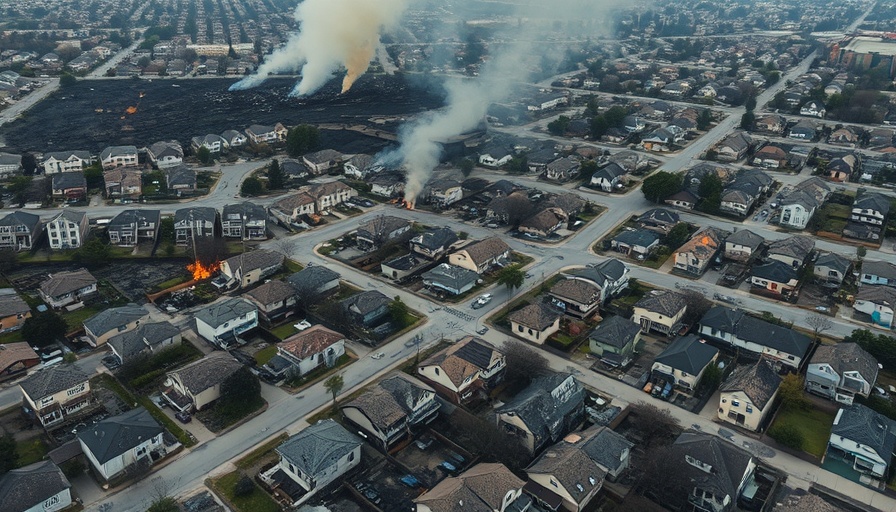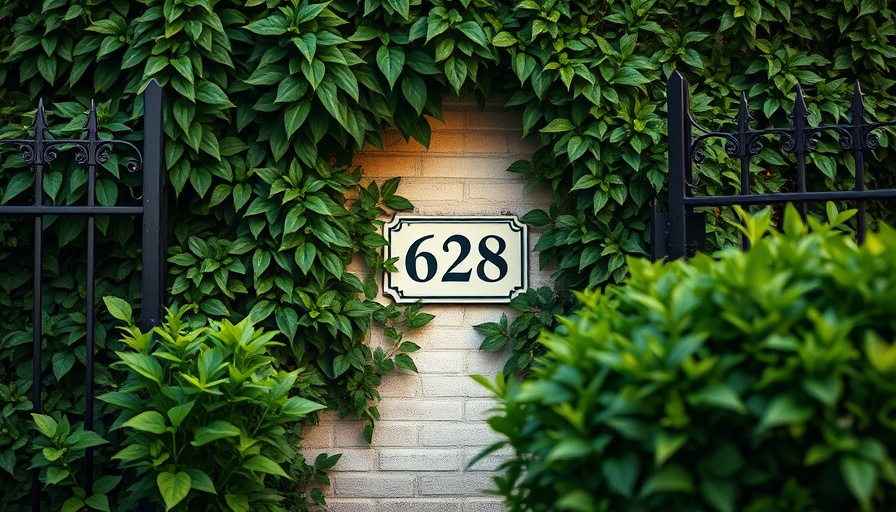
Healing a City: The Aftermath of L.A.'s Wildfires
When wildfires raged through Los Angeles in January, they did more than merely scorch landscapes; they disrupted lives, uprooted families, and erased cherished memories. Neighborhoods like Pacific Palisades, Altadena, Eaton Canyon, and Malibu bore the brunt of the devastation. With at least 30 lives lost, most in Eaton and Palisades, and over 180,000 residents forced to evacuate, the impact was truly heartbreaking. The destruction of schools, businesses, and nearly 17,000 homes has left emotional scars far more profound than any financial implications. The estimated $8 billion damage imparts a stark reminder of the chaos left in the wake of natural disaster.
The Housing Crisis Deepens: A Look at Market Pressures
Even in normal times, Los Angeles was facing a housing crisis, with rental rates climbing above $2,200 per month and median home prices nearing $950,000. For many families, the dream of homeownership feels like a distant fantasy, especially now as the fires have intensified demand for housing. Thousands are now left scrambling for shelter in a market already at its breaking point. Following the disaster, average rents surged to over $2,500 per month, with some areas witnessing hikes of 10% or more. This unprecedented demand combined with a collapse in available housing stock presents a grim outlook for low- and middle-income families. With temporary accommodations filled to capacity and shelters overflowing, the road ahead is fraught with challenges.
A Renewed Hope: The Community's Push for Recovery
Yet, amidst the despair, there lies an ember of hope as grassroots movements gain traction. Local leaders, organizations, and concerned citizens are banding together to not just rebuild, but to reimagine Los Angeles post-fire. This isn't merely a quest for physical reconstruction; it represents a profound opportunity to rethink how cities meet the needs of their residents.
Rebuilding Smarter: Applying Lessons from the Past
As conversations begin about future urban planning, there’s an increasing emphasis on sustainable and resilient building practices. Experts suggest that incorporating fire-resistant materials and architectural designs can shield homes and businesses from future disasters. This proactive approach could help the city avoid being continually caught in the cycle of catastrophe and can lead to a safer environment that is prepared for extreme weather.
Overcoming Roadblocks: Challenges Ahead
While enthusiasm for recovery burgeons, significant roadblocks remain. Regulatory hurdles, funding shortages, and community resistance can slow down rebuilding efforts. The complexity of navigating insurance claims and government aid also looms large over many families still waiting to find their footing.
How to Help: Community Resources and Support
As the community rallies together, it is crucial to consider how individuals can lend a hand. Nonprofits and local organizations are actively seeking donations and volunteers to assist those affected by the fires. Whether contributing financially or providing essential supplies, every small act of kindness helps strengthen the fabric of a community in need.
Recovering from the Los Angeles wildfires is not just about rebuilding structures; it's about restoring a sense of belonging and revitalizing hope in a city so rich in culture and spirit. As residents forge ahead with grit and determination, the collective strength of the community can serve as a guiding light toward a brighter future.
 Add Row
Add Row  Add
Add 




 Add Row
Add Row  Add
Add 

Write A Comment